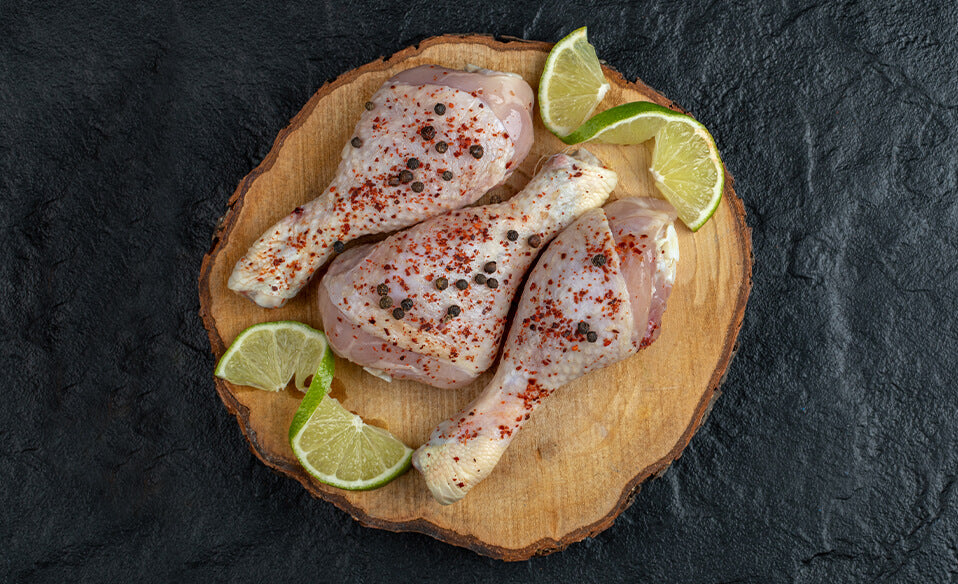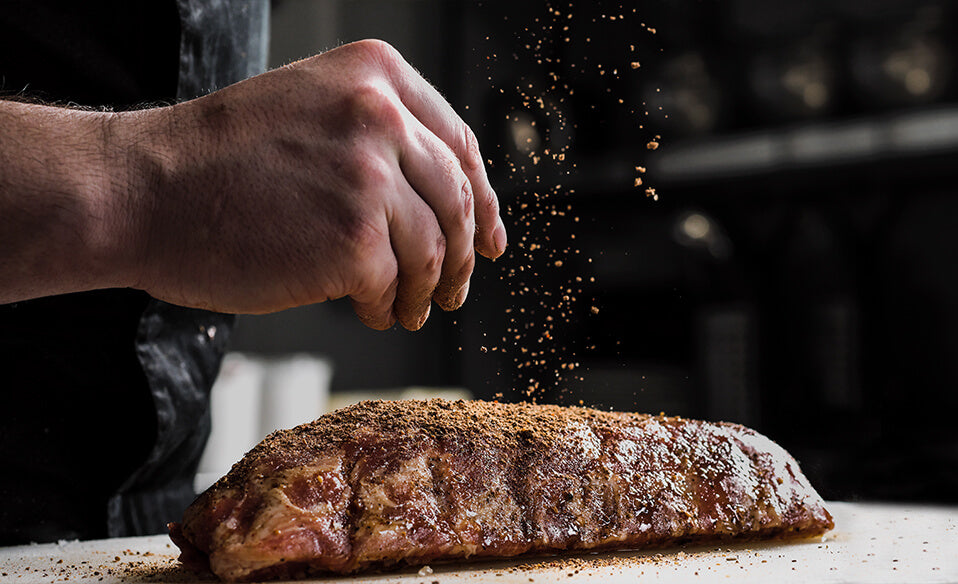Seasoning is important. For both flavour and finish, there are no real rules to how you treat your meat, it’s a matter of taste. However, there are ways to get the best out of your kitchen endeavours and knowing what to use and where can really up your game.
The most basic of seasoning, salt and pepper should always play a part. But choosing the right salt and pepper can make all the difference.
Push it Real Good
Salt and pepper are normally never too far away in any kitchen. These stalwarts of the seasoning game are more than often found on dining tables across the world as well. People prefer to pursue their preferences when it comes to salt and pepper, so a grinder and shaker are often part and parcel of setting the table.

Using the correct salt to season may seem unnecessary. All salt tastes the same, right? Whilst this is mostly true, when seasoning meat in preparation for cooking, kosher salt is your friend.
- Kosher salt is made up of bigger salt rocks. The benefit here is how the meat absorbs the salt. The wider, coarser grains of kosher salt are way gentler than table salt and contain no iodine. This means that rather than add a salty flavour, kosher salt enhances the flavour of the meat.
- Finer salt means more salt. In a pinch of kosher salt, you’ll reduce the amount of salt you’re adding compared to table salt.
- For pepper, freshly ground should always be the choice over ground pepper. Ground pepper oxidises and loses flavour. When using freshly ground corns, you can guarantee that you’re getting the best flavours possible from the pepper corns.
- Freshly ground pepper has a much fruitier and brighter taste than ground. Using a coarser grind when seasoning will also, like salt, produce a better finish and flavour.
Beef
We salt meat to draw the moisture out. The brine formed on the surface of the meat is then absorbed back in. This helps lock in flavour and creates a much better crust to the exterior of the meat once cooked.

When cooking a steak, you should first allow the steaks to reach room temperature. The sear will be of a much higher standard. You should pat the meat dry, then season all over. The meat should be covered completely with seasoning. It may look like there is too much, but remember you cannot season the inside, and the meat will absorb the seasoning.
Chicken
With chicken, you should try and get your fingers between the skin and the meat. Getting in between these layers will improve the flavour of the meat, as well as the crispness of the skin.

For chicken breast, create a rub with a blend of herbs and spices. As the worlds most popular meat, and with everything tasting of chicken, you can put your own stamp on your chicken with a creative and flavoursome blend.
Peppers, onion powder and paprika, with basil, parsley, thyme and rosemary. Any combination or quantity to suit your palette. Experimentation is the key, but also keep in mind that you do not want to overpower the taste of the chicken.
Lamb

Condiment Crusade

However, if you like your steak with a little more zing, a light dusting of table salt may be the key. Our top tip for table tasters is to always pour the salt into your hand. Then you can apply with light pinches, and not have to worry about the speed with which it comes out of the seller.
- With pepper grinders, a quick grind to the side of your plate should give you a good indication of how much you’ll be applying.
- When applying salt and pepper at the table, a good distance of around 12” is recommended so you get a nice even spread.
Seasoning to Preserve
All our meats come specially packed to maximise the lifespan. If you’ve opened the packaging and are worried about reducing the life of your meat, you can always use seasoning to preserve the meat for longer.

Our blog A Guide to Preserving Meat, has all you need to know about storing and preserving meat.
If you don’t have the time space or patience for preservation, storage or cooking. Our sister company Marble offer cooked meat, delivered to your door in 70 minutes, within 20km of Mabelah.
If you’d like any further information on seasoning, feel free to ask one of our specially trained specialists when placing your order online or at any of our butcher shops.

